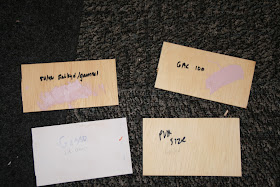 |
| Fog at Sea and Beach 8 x 6 |
Field test 2, OREGON COAST, 60-65 degrees. No sun, but also no wind!
Again, what I am looking for is a little faster drying color that I can still push around on my canvas. I have put away my Fastmatte white and pulled out an M Graham Alkyd white, which I have been using for years now, and which appears to have only a moderate amount of alkyd with the Sunflower oil.
It's not a very good test, changing two things at once, I know. But today, I am enjoying painting with more mobile paint. The Fastmatte colors themselves are a little stiff, but mixed with my white, and/or a little Safflower oil, and they move across the canvas just the way I want them to.
My paintings are completely dry in 2 days. The colors are not quite as matte, but they also haven't dried in and are retaining their color well. Since I don't care about having a matte painting, I call this a success.
Next thing I want to try is replacing a few of my slower drying colors in my regular oil palette with Fastmatte colors, to see if they are compatible. My slowest driers are Sap Green and Indian Yellow.
FASTMATTE with Safflower Oil
Fast drying? Moderately. Matte? Moderately. Colors push into other colors? Yes, at these temperatures.
















